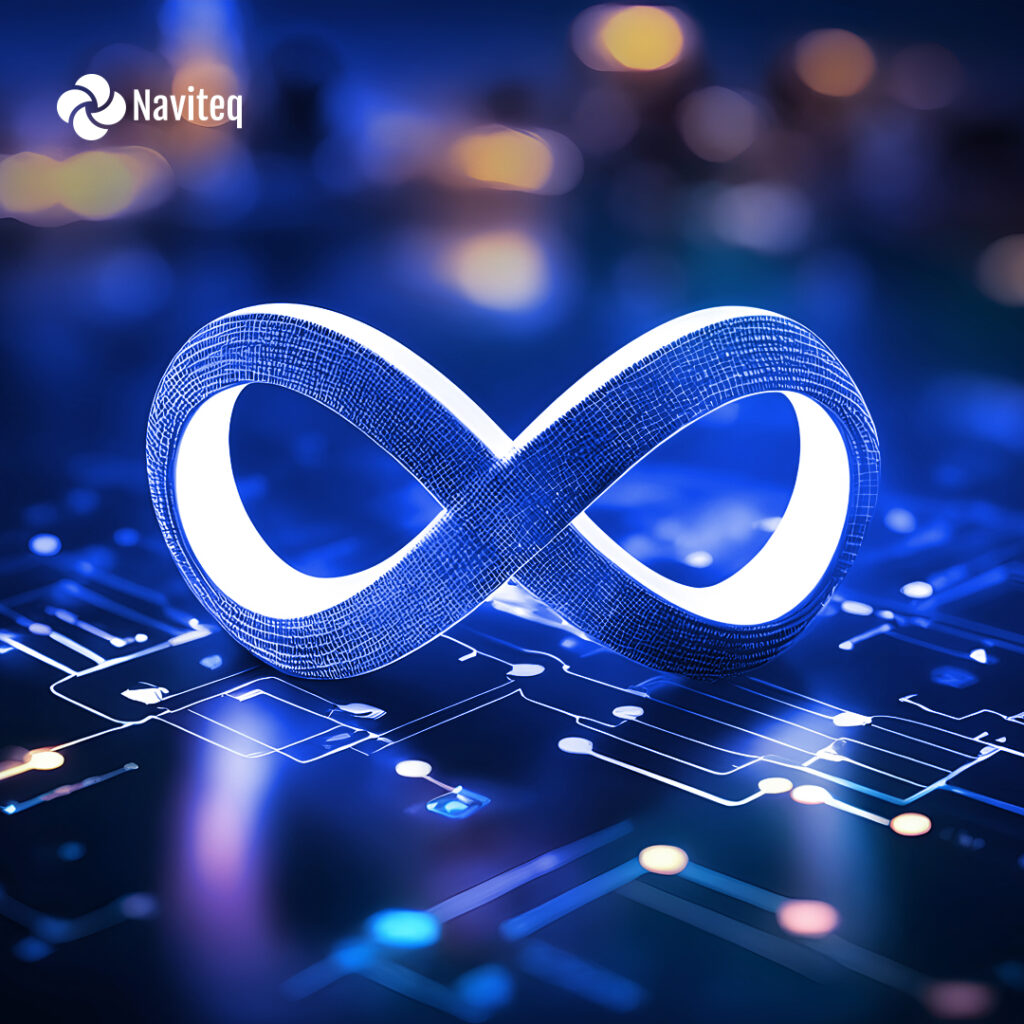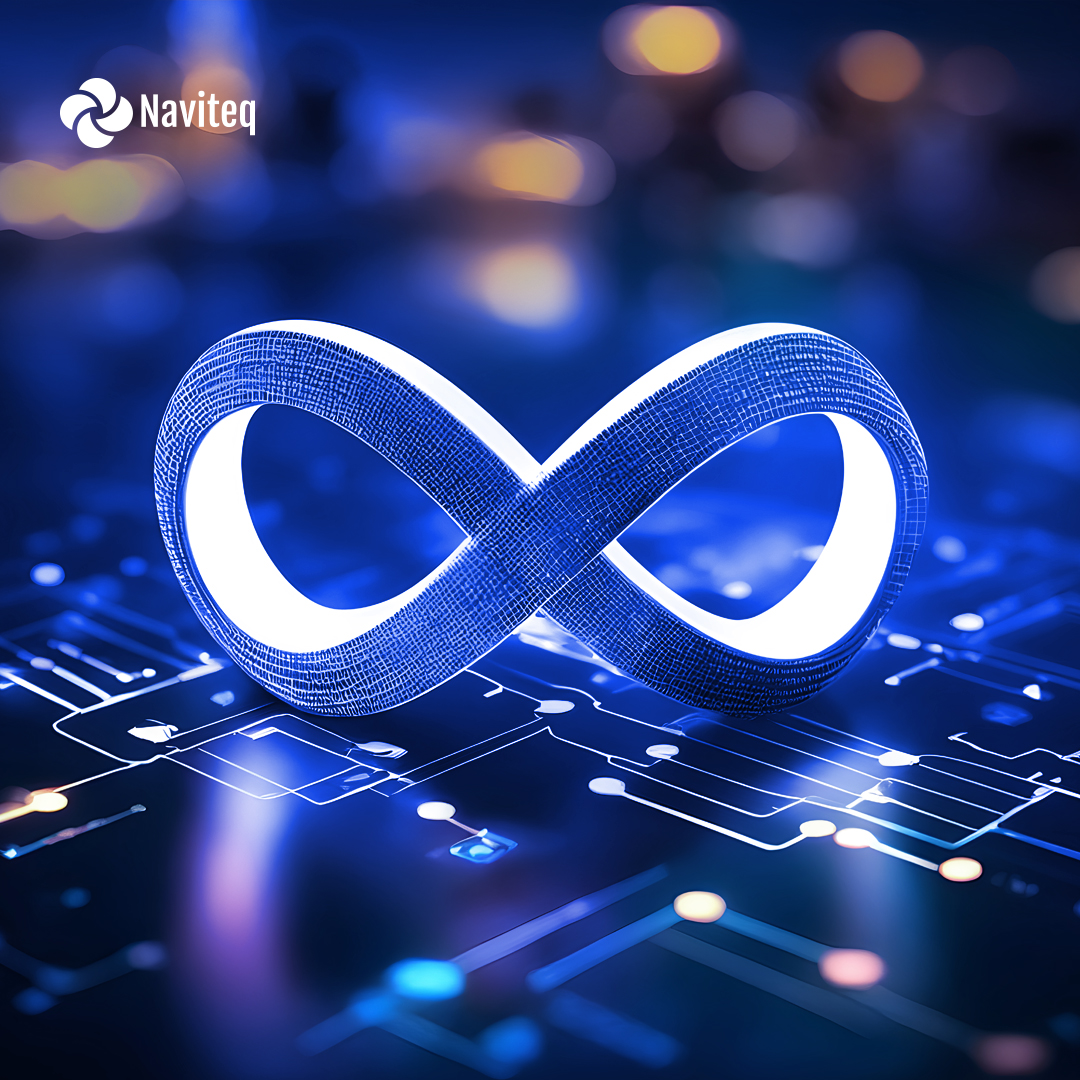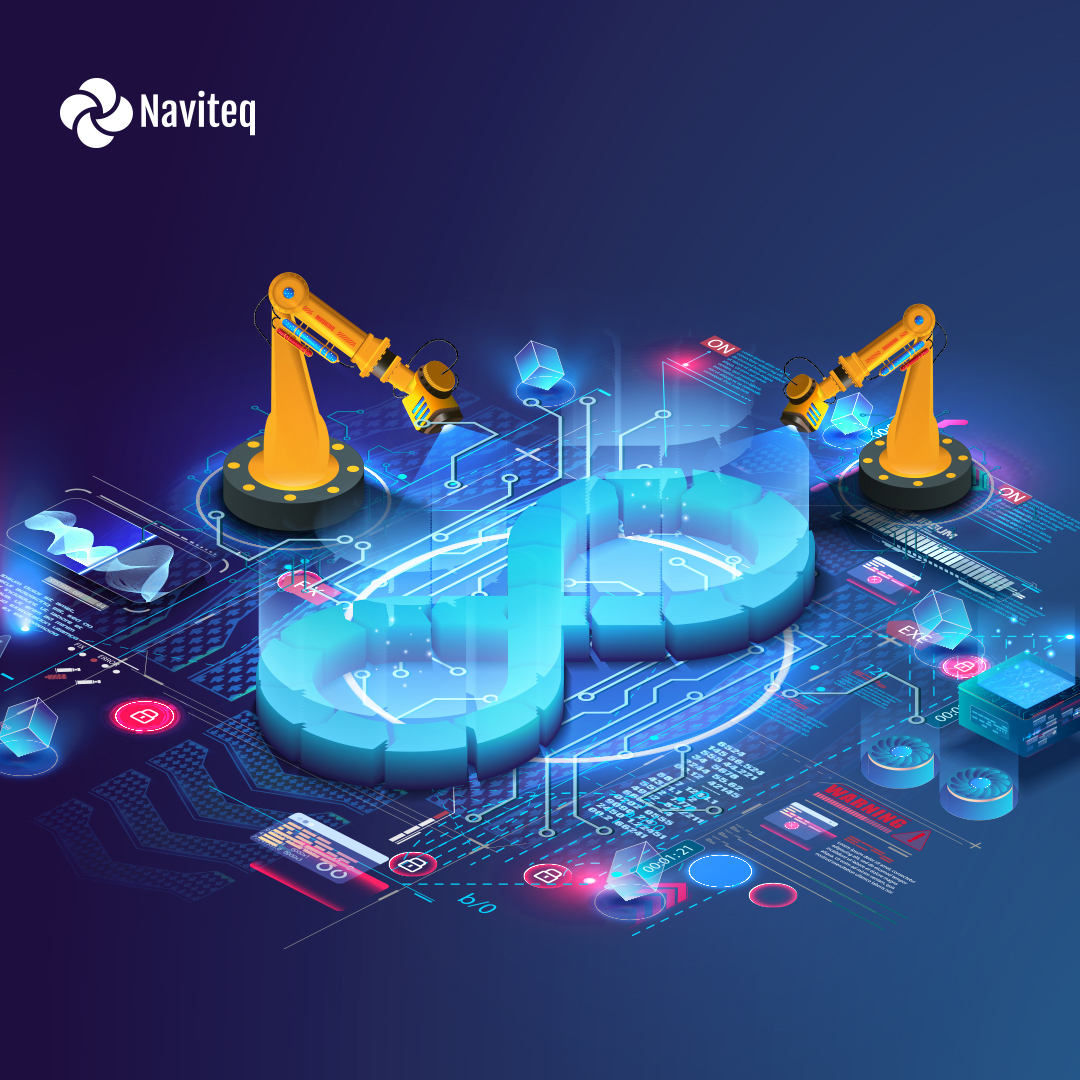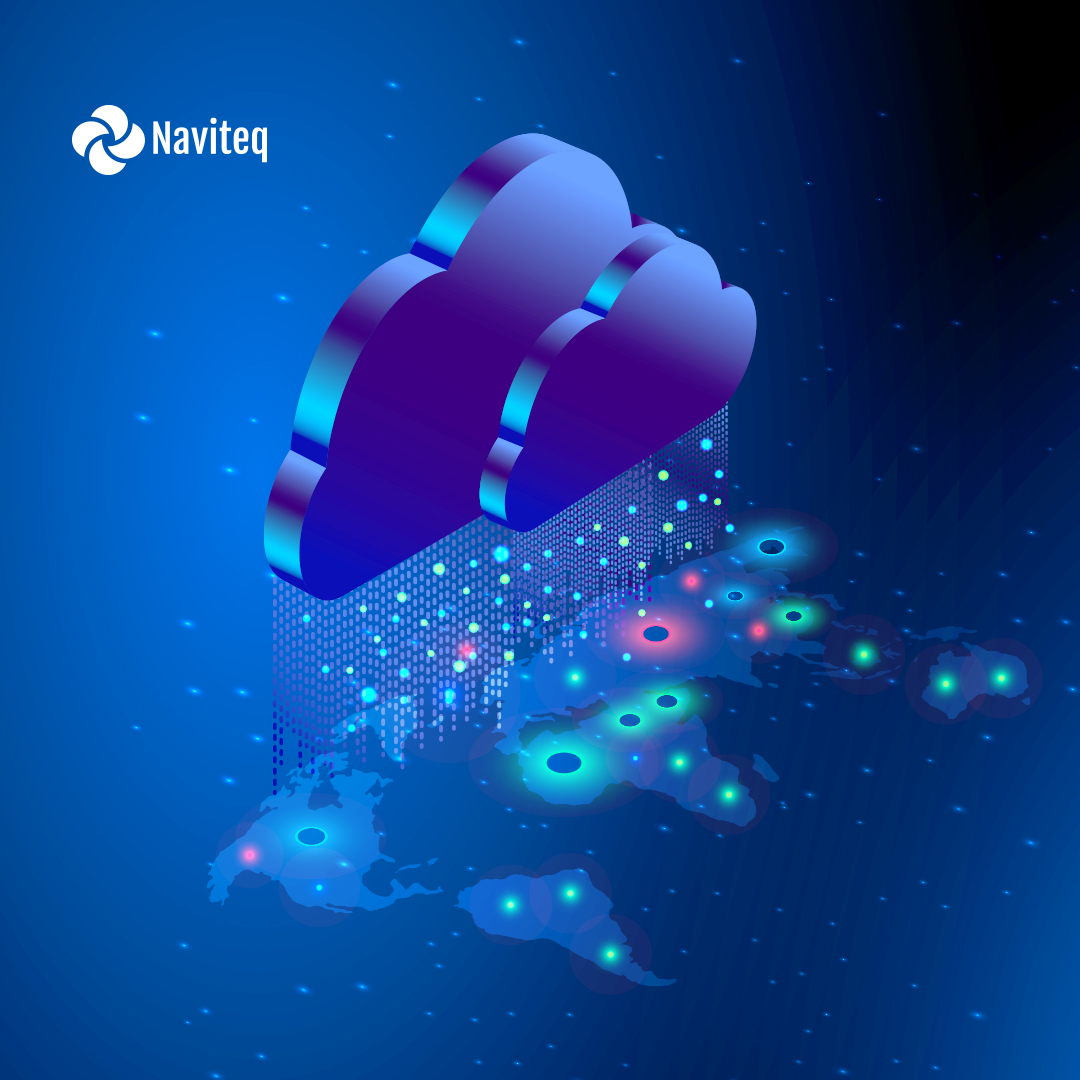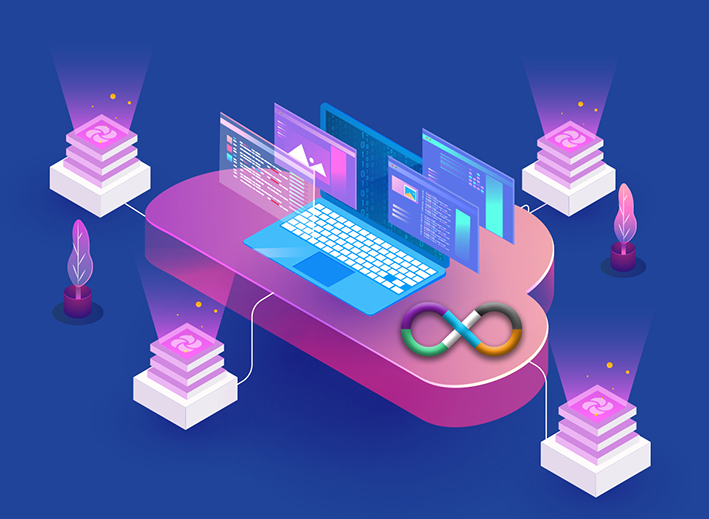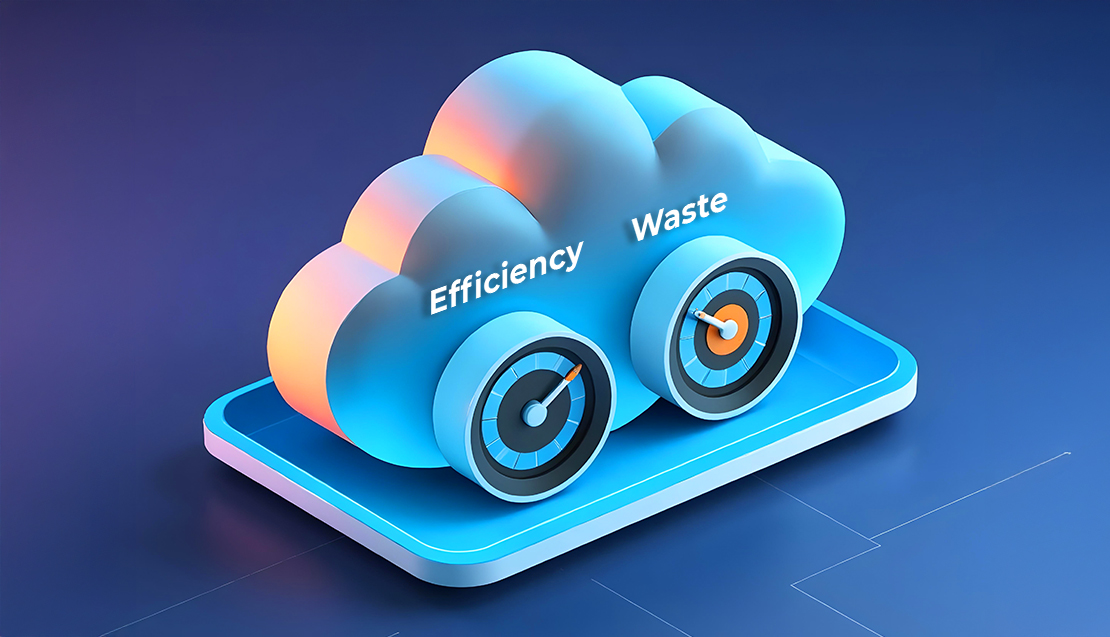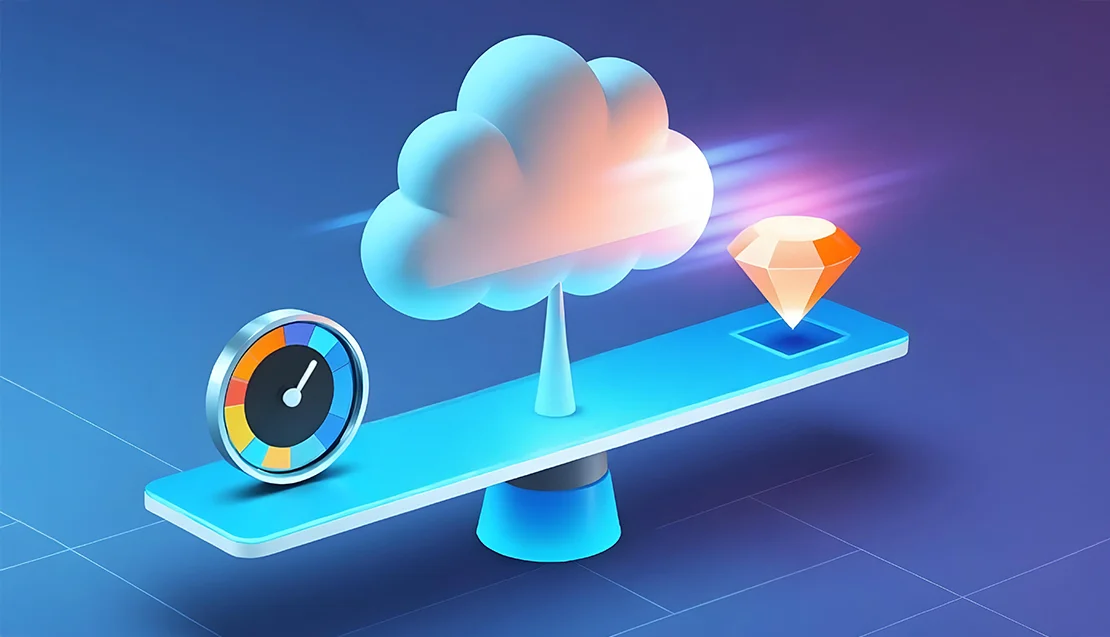The evolution of intelligent infrastructure management
As demands on development teams intensify, traditional automation is no longer enough. Instead of simply scripting repetitive tasks, AI-powered DevOps introduces systems that understand context, anticipate requirements, and respond proactively to change. This evolution enhances DevOps automation by embedding intelligence into every layer of infrastructure.
At the core of this transformation are Model Context Protocols (MCPs) and MCP Servers. Together, they enable intelligent DevOps integration by delivering context-aware infrastructure. These are systems that not only provision resources but also understand why specific deployment decisions are made. More than blueprints, they are dynamic, intelligent templates that align infrastructure behavior with application intent.
Why traditional cloud operations are failing to scale
Development teams are dealing with unprecedented complexity. Every new microservice, environment, or deployment brings additional cloud resources to manage. But most DevOps and platform teams still rely on tools that require manual intervention for policy enforcement, configuration updates, and security checks.
This manual effort creates friction. It slows delivery, increases the risk of errors, and fails to scale in fast-moving, cloud-native environments.
The rising burden on DevOps teams and platform engineers
Cloud-native development now involves orchestrating across hybrid and multi-cloud setups, each with unique compliance, security, and performance demands. Instead of focusing on product velocity, teams spend hours reviewing infrastructure changes, chasing provisioning delays, and managing reactive issues.
Platform engineers are tasked with enforcing consistency, yet many of their tools still depend heavily on human oversight. This undermines the very efficiency DevOps is meant to deliver.
The shift from manual to AI-augmented operations
The industry is witnessing a profound shift from manual to AI-augmented operations. This isn’t just about simple automation; it’s about infusing artificial intelligence for IT operations (AIOps) and machine learning into every layer of infrastructure management.
This move signifies a leap toward truly automated IT operations, where systems learn, adapt, and predict issues before they arise. AI-powered DevOps enables self-service infrastructure that is both intelligent and scalable.
Understanding Model Context Protocols (MCPs)
Definition and core functionality
Model Context Protocol (MCP) is a standardized protocol for managing and synchronizing shared context across distributed systems, agents, or services. It defines how components interact with a centralized or decentralized context server (MCP server), ensuring consistency, traceability, and interoperability. MCP is foundational in systems that rely on shared state and coordinated workflows, such as multi-agent architectures or context-driven cloud infrastructure.
MCPs in the cloud provide declarative blueprints that define how infrastructure should behave, based on context such as user role, workload type, and environment. They enable platform teams to codify standards, enforce policies, and ensure consistency across environments while empowering developers with safe, self-service provisioning. Unlike traditional Infrastructure as Code (IaC) tools that focus purely on provisioning, MCP servers embed intelligence directly into infrastructure workflows and are critical for robust cloud infrastructure management.
Key capabilities and components of cloud infrastructure
MCP’s declarative blueprints define not just what infrastructure should exist, but how it should behave based on context, user roles, workload characteristics, environmental conditions, and business policies. Dedicated MCP servers power platform-wide governance by embedding policy-as-code, access control, and usage standards into infrastructure workflows. They provide the structure for unparalleled infrastructure visibility, secure access to sensitive data, and consistent operations across hybrid and multi-cloud setups. This robust framework ensures meticulous governance and consistent policy enforcement, preventing configuration drift and maintaining security posture.
How MCPs differ from legacy infrastructure tools
Traditional tools primarily focus on provisioning infrastructure. MCPs go further by bringing intelligence and control into the lifecycle. The key differentiator lies in their adaptive nature. Where legacy management tools require manual intervention for every edge case, MCPs respond dynamically to changing conditions. They understand that a database deployment in a development environment requires different security controls than the same deployment in production, automatically adjusting configurations while maintaining compliance standards. They respond dynamically to context and user inputs, shifting infrastructure from static templates to context-aware models that can adapt and scale securely. This isn’t about replacing DevOps, it’s about providing an intelligent layer that enhances and automates many of its functions, significantly reducing complexity.
The intelligence layer: AIOps and infrastructure automation
The true power of AI-powered DevOps lies in its intelligence layer, powered by AIOps. AI-powered DevOps platforms leverage predictive analytics, continuous monitoring, and automated remediation to create truly autonomous operations environments.
Continuous monitoring and drift detection
AIOps tools enable continuous monitoring and provide real-time infrastructure visibility. When configurations deviate from approved standards, automated tools immediately identify discrepancies and trigger remediation workflows. This proactive approach prevents security vulnerabilities and compliance violations before they impact production systems.
Predictive analytics for resource optimization
Using AI-powered algorithms, AIOps platforms perform predictive analytics for resource optimization. By analyzing historical patterns and current usage trends, AI-powered systems can predict resource needs, optimize costs, and prevent performance bottlenecks before they affect user experience. This capability is particularly valuable for cloud cost optimization, where predictive scaling can reduce cloud spending by significantly while maintaining service quality.
Automated remediation and anomaly response
When anomalies are detected, AIOps platforms initiate automated remediation. These automated tools are designed to respond instantly to issues, resolving them without human intervention. This proactive approach significantly reduces downtime and enhances system reliability. These AIOps solutions are a cornerstone of autonomous operations.
Root cause analysis without human intervention
One of the most powerful aspects of artificial intelligence for IT operations is its ability to perform root cause analysis without human intervention. When anomalies occur, AIOps platforms can trace problems to their source, implement fixes, and document resolutions for future reference. This autonomous problem-solving capability dramatically reduces mean time to resolution while freeing operations teams to focus on strategic initiatives.
Self-service infrastructure: transforming the developer experience
MCPs fundamentally transform the developer experience, empowering them with unparalleled autonomy. Self-service infrastructure platforms enable development teams to provision resources, deploy applications, and manage environments without depending on operations teams for routine tasks.
Infrastructure on-demand: the new developer workflow
Developer self-service capabilities transform the traditional development process from a ticket-based system to an on-demand, infrastructure-as-a-service model. Developers can spin up testing environments, deploy applications, and scale resources through intuitive developer portals that abstract away infrastructure complexity while maintaining security and compliance standards.
Policy enforcement without manual gatekeeping
Policy enforcement becomes automatic rather than manual. Instead of requiring DevOps teams to review every infrastructure change, MCPs embed governance directly into provisioning workflows. Developers receive immediate feedback on policy violations, security concerns, or resource limitations, enabling them to self-correct without external intervention.
Accelerating CI/CD through intelligent automation
The integration of intelligent automation directly accelerates CI/CD pipelines. By automating infrastructure provisioning and configuration based on defined policies, it ensures high quality testing and deployment, significantly enhancing overall DevOps automation.
Implementing AI-powered MCPs: real-world applications
The practical applications of AI-powered MCPs are vast and impactful. Some such application are:
Multi-cloud standardization and governance
Forward-thinking organizations are already implementing AI-powered infrastructure management with remarkable results. Multi-cloud standardization efforts that previously required months of manual configuration now deploy consistently across hybrid cloud environments within hours, with automated governance ensuring compliance across all platforms.
DevSecOps: integrating security into infrastructure workflows
MCPs inherently support DevSecOps by integrating security directly into infrastructure workflows. By embedding security controls directly into infrastructure workflows, organizations can achieve secure deployment practices without sacrificing development velocity. Automated tools scan for vulnerabilities, enforce security policies, and maintain audit trails without requiring security team intervention for routine deployments.
FinOps integration: budget-aware resource provisioning
Integrating MCPs with FinOps principles enables budget-aware resource provisioning. They provide deep cloud visibility into cloud spending and optimize resource allocation, leading to significant cloud cost optimization.
Scaling operations without team expansion
One of the most compelling benefits is the ability to scale operations without team expansion. AI-powered DevOps and self-service infrastructure mean that DevOps teams can manage a larger, more complex infrastructure with the same number of personnel, effectively multiplying their impact. This is how Naviteq helps customers scale faster without increasing team size.
Strategic roadmap: adopting MCPs and AIOps
Adopting AI-powered MCPs and AIOps requires a strategic approach.
Starting with existing IaC assets and configurations
Organizations don’t need to abandon existing investments to embrace AI-powered DevOps. Organizations can begin by integrating MCPs with their existing infrastructure as code (IaC) assets and configurations, leveraging their current management tools as a starting point. The most successful implementations begin with current Infrastructure as Code assets and configurations, gradually layering intelligence and automation capabilities over existing management tools.
Integrating with GitOps and CI/CD pipelines
GitOps integration provides a natural starting point, allowing teams to incorporate AI-powered policy enforcement and automated remediation into existing CI/CD pipelines. This ensures that infrastructure changes are managed like code, with automated tools facilitating testing and deployment, further enhancing DevOps automation. This minimizes disruption while demonstrating value through improved deployment reliability and reduced manual intervention requirements.
Implementing developer portals incrementally
Developer portals can be implemented incrementally, starting with simple resource provisioning capabilities and gradually expanding to include advanced features like automated scaling, security scanning, and performance optimization. This approach allows teams to build confidence in AI-powered systems while maintaining operational stability.
Measuring success: key metrics for AI-powered infrastructure
Success metrics should focus on both operational efficiency and developer productivity. Key indicators include reduced deployment lead times, decreased manual intervention requirements, improved resource utilization, and enhanced developer satisfaction scores. These metrics demonstrate the business value of AI-powered infrastructure while identifying areas for continued improvement.
Benefits of intelligent infrastructure management
The benefits of embracing intelligent infrastructure management are transformative.
Enhanced developer autonomy and productivity
Developers experience enhanced autonomy and productivity, accelerating the entire development process and improving their overall developer experience, leading to faster software delivery.
Automated compliance and governance
With automated compliance and governance built into MCPs, organizations can confidently manage sensitive data, knowing that their infrastructure management adheres to strict policies, all facilitated by robust DevOps automation.
Real-time visibility across cloud environments
Real-time infrastructure visibility across diverse cloud architectures is no longer a luxury but a standard. This comprehensive view, powered by automated IT operations, enables proactive decision-making and rapid problem resolution.
Reduction in platform overhead and technical debt
The adoption of AIOps solutions and AI-powered infrastructure leads to a significant reduction in platform overhead and technical debt, as intelligent management tools streamline operations and minimize manual intervention.
Common pitfalls and how to avoid them
While the benefits are clear, it’s important to be aware of potential pitfalls. They are as follows:
Balancing flexibility and control in a self-service model
A key challenge is balancing flexibility and control in a self-service model. Establishing clear guardrails and robust policy enforcement mechanisms within MCPs is crucial to prevent unmanaged sprawl.
Establishing clear governance models early
Establishing clear governance models early in the adoption process is paramount. This ensures that all teams understand their roles and responsibilities within the new self-service framework.
Training teams for self-service success
Comprehensive training for all teams is essential to ensure they can effectively leverage self-service capabilities and understand the underlying principles of AI-powered infrastructure.
Integrating AIOps as a core design principle
AIOps should not be an afterthought but integrated as a core design principle. Leveraging AIOps tools from the outset provides continuous infrastructure visibility to the operations team, enabling predictive capabilities and automated responses. It’s often wise to get help from industry professionals at Naviteq who have decades of experience in the field to avoid falling into common pitfalls. Naviteq’s team of experts can help you develop a tailor-made strategy and integrate MCP-based intelligence into your cloud infrastructure.
The future of DevOps: AI-powered infrastructure intelligence
The future of DevOps is undeniably intertwined with AI-powered infrastructure intelligence.
Beyond automation: toward autonomous operations
Cloud infrastructures are moving beyond simple automation toward truly autonomous operations, where AI and machine learning enable systems to self-optimize and self-heal, guided by advanced predictive analytics and sophisticated cloud management strategies. The transformation toward AI-powered DevOps represents more than technological evolution, it’s a fundamental reimagining of how organizations approach infrastructure management. Rather than replacing DevOps teams, this approach amplifies their capabilities, enabling platform engineers to focus on strategic initiatives while AI handles routine operational tasks.
The changing role of platform engineers and development teams
The role of platform engineers and development teams will evolve from reactive problem-solvers to strategic architects, focusing on designing and optimizing the intelligent infrastructure itself, leveraging AIOps platforms to their full potential. DevOps teams become architects of autonomous systems rather than operators of manual processes.
Naviteq’s vision for AI-powered infrastructure at scale
At Naviteq, our vision for AI-powered infrastructure at scale is to empower organizations with unparalleled customer experience through highly efficient and automated IT operations. We believe in creating resilient, self-optimizing systems that enable innovation and drive business growth. This isn’t just about cost savings, it’s about unlocking innovation potential that was previously constrained by infrastructure limitations.
Take the next step with Naviteq
AI-powered DevOps isn’t about replacing people. It’s about amplifying human expertise with systems that understand context and adapt in real time. Model Context Protocol servers represent this next step—enabling infrastructure that configures and optimizes itself.
Organizations that adopt intelligent cloud infrastructure management models now will innovate faster, reduce time-to-market, and create better developer experiences. At Naviteq, we help engineering teams build self-service, AI-augmented infrastructure. Our experts bring the strategy and tools needed to streamline operations and scale with confidence.
Want to explore what this could look like for your team?
Schedule a consultation with our DevOps experts to map your next move.
Frequently Asked Questions
What is AI-driven DevOps?
AI-driven DevOps integrates artificial intelligence into DevOps workflows to enhance automation, predictive analytics, and autonomous operations. It enables infrastructure to respond dynamically to changing conditions, reducing manual intervention and accelerating delivery cycles.
Will DevOps be automated by AI?
Many aspects of DevOps are already being automated by AI, especially in monitoring, deployment, incident response, and configuration drift detection. AI doesn’t replace DevOps engineers—it enhances their productivity by handling repetitive and reactive tasks.
How can AI be used in CD pipelines?
AI can be used in continuous delivery (CD) pipelines to optimize release timing, detect anomalies in builds, automate testing, and enforce compliance policies. Integrating AI into CI/CD ensures more resilient and efficient software delivery cycles.
What are AI CDs?
AI CDs refer to the use of Artificial Intelligence in continuous delivery systems. These systems leverage ML algorithms to predict deployment risks, optimize rollouts, and automatically manage infrastructure changes during delivery.
How can AI ML be used in DevOps?
AI/ML in DevOps can be applied to analyze logs, detect anomalies, predict failures, automate root cause analysis, and optimize resource allocation. It transforms reactive operations into proactive, intelligent workflows.
How can generative AI be used in DevOps?
Generative AI can assist in writing infrastructure code, generating test scripts, creating incident responses, or simulating user behavior for QA testing. Tools like GitHub Copilot and custom LLMs accelerate development while maintaining quality.
How can AI be used in deployment?
AI can automate deployment decision-making by analyzing success/failure patterns, suggesting optimal release windows, and managing blue/green or canary deployments based on real-time data.
How can AI be used in Azure DevOps?
Azure DevOps supports AI integrations through Azure Monitor, Application Insights, and third-party AIOps tools. These enhance monitoring, predict issues, and integrate machine learning models for smarter pipeline automation.
